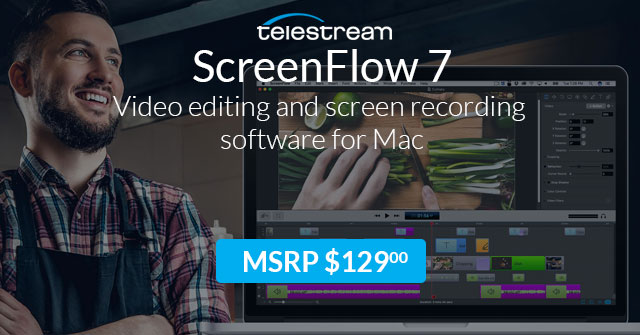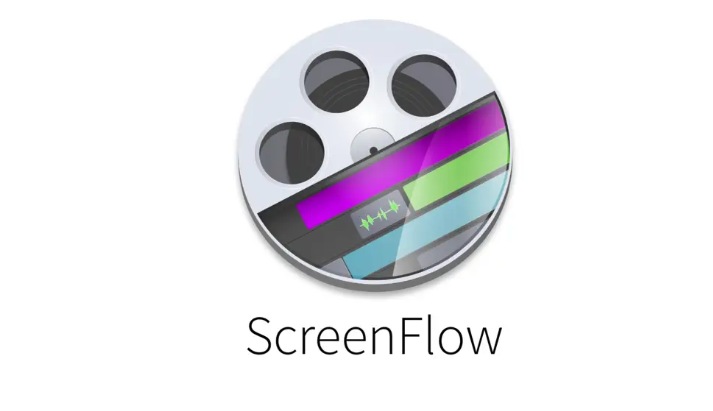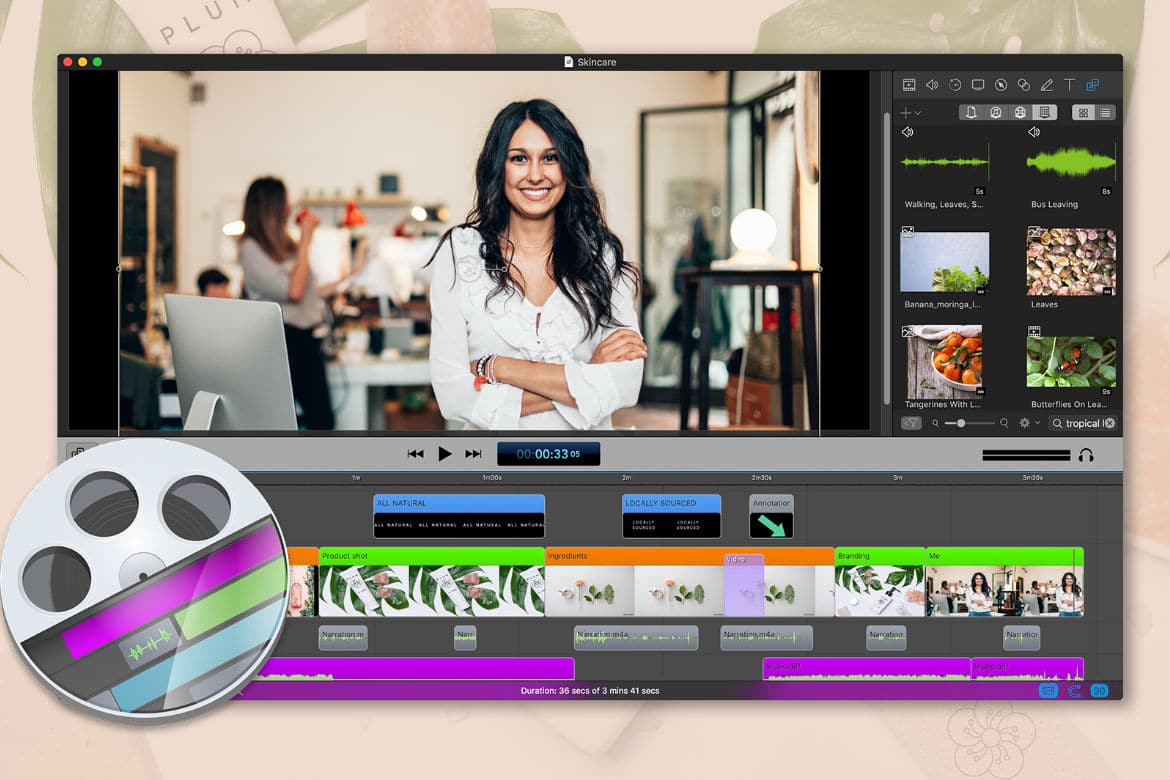A screenflow is a user interaction flow. Screenflows are similar to processes in that they are designed graphically, have a start and an end activities, support conditional expressions, and have their own instance variables.
Screenflows differ from business processes in that the entire sequence of a screenflow is executed by a single participant, so the first thing you will notice in a screenflow design editor is that there are no swimlanes.
Screenflow For Windows
ScreenFlow is one of the most well-known screen recording applications, which is a Mac-exclusive program. That's to say, ScreenFlow is only available for Mac. If you want to find a reliable program to record your screen, this article is prepared for you, listing top 5 best screen recorder alternatives to ScreenFlow for Windows. ScreenFlow: Ranking above Camtasia, ScreenFlow is known to be an all-in-one, user-friendly screen capture, and editing software. It’s a favorite amongst beginners who are trying their hand at making professional videos and have high standards for the end product. Please don’t think smart to include ToWorkbasket router activity and assume, people who can access workbasket can work on the screenflow parallel. If you try like that, then Pega will catching you saying don’t cheat me 😉. So only a Pega operator can work on the screen flow. So I mentioned the router as ToCurrentOperator. ScreenFlow is considered all-in-one software for video creation, including recording and editing video, and also editing already-existing video from your computer. It’s available on Mac only (no ScrennFlow for Windows). ScreenFlow has a number of self-service options, including documentation for current and past versions, a knowledge base and a community forum.
Screenflows are called from an interactive activity. The state of a screenflow is not persisted in the process instance till the screenflow is complete and returns to the calling activity. If a participant starts to execute a three page screenflow and inputs information into the first two pages and then logs out, it is as if he had input nothing.
You can call a screenflow are called from any interactive activity of any process in the project. Use them to implement interactive tasks.
- Begin
- End
- Interactive Component Call
- Automatic
- Subscreenflow
 These activities have similar behavior as those in the process, but they are much simpler. In addition, screenflows support three types of transitions:
These activities have similar behavior as those in the process, but they are much simpler. In addition, screenflows support three types of transitions: - Unconditional
- Conditional
- Exception
- Due

You should see interactive activities as a point in the process where instances get into an inbox for something to be done. The execution of this activity task will involve the invocation of interactive components. This sequence of interactive component invocations should be mapped to the screenflow's activities. Later on, this screenflow should be mapped as the implementation of the interactive activity.
When to Use Screenflows
 You should use screenflows in most interactive tasks whenever possible. They have several advantages over BPM Objects with hand written interactions:
You should use screenflows in most interactive tasks whenever possible. They have several advantages over BPM Objects with hand written interactions: - Virtually no code is necessary to connect the different presentations.
- The flow between the screens is explicit and graphically shown.
Differences between Screenflows and Sub-processes
The most important differences are the following:- Screenflows are executed by a single participant to complete a process task.
- They are designed to be used as a single task within a process.
Model-View-Controller Analogy
If you are familiar with Model-View-Controller (MVC) architecture, you can think of a screenflow as the controller, while the BPM Object is the model, and presentations are the view. Just as with an MVC pattern, the screenflow, acting as the controller, determines which page the user will see, and is responsible for initializing it to whatever values are required.
Screenflow logic also handles user responses. For instance, note that in the example screenflow shown above, a conditional transition is taken when the use clicks on the Cancel button in the Edit Preferences Interactive Component Call. There are some characteristics, which do not fit exactly with the Model-View-Controller model. For example, presentations are a part of the BPM Object definition, while an ASPX or JSP page is an independent file.
At a Glance
Expert’s Rating
Screenflow 8
Cons
Our Verdict
As someone whose job involves capturing screen movies, I’m always on the lookout for the Next Great Movie Capture Tool. For years, my tool of choice has been Ambrosia’s Snapz Pro X (, screenshot-only version, $29; movie version, $69; upgrade, $20), which we discussed in this Gems roundup.
Snapz, as good as it is, does have limitations, the largest of which is its need to immediately write captured video out to a .mov file. So after recording a screen movie, you then wait—potentially quite a while depending on the length and settings of your capture—for Snapz to save the movie file to disk before you can capture again. If you’re just working on one segment, this isn’t a huge problem. But if you want to capture 10 or 20 clips for a project, it’s a long cycle of capture, wait for save to disk, then repeat. The other problem with this approach is that typically you record much more footage than you wind up using, so you’re waiting to save data that you’re never going to use.
Enter Vara Software’s ScreenFlow (, $100). Like Snapz, ScreenFlow can capture video on your screen, including the Mac’s audio track. You can also record audio and video from an iSight camera, which is something that Snapz can’t do. In my testing, ScreenFlow did a great job at capturing even a 1,920-by-1,200 screen with a 3D game running—I couldn’t discern any difference between the ScreenFlow capture and a similar one I created with Snapz Pro.
A screen capture editing studio
Where ScreenFlow really differs from Snapz, though, is in what happens after you finish your capture. Instead of writing out your capture to a movie file when you stop recording, as Snapz does, captures are instantly opened in something akin to a screen capture editing studio (see below).
For those who have used iMovie HD, Final Cut Express, etc., this interface will look somewhat familiar. The recorded clip is displayed at the top left, a timeline appears at the bottom, and the right-side panel contains a number of actions that can be applied to your clip. You can save your work at this point, also without delay. ScreenFlow saves your project as a bundle, so all you’ll see in the Finder is a single (potentially large) file. This file isn’t a usable movie; it’s a project file, containing your captured video and any edits you apply.
Actions can affect the entire clip, or you can set an in point and out point—so you could, for instance, drop the audio level for 10 seconds in the middle of your clip, then bring it back to normal. Download darker than black special sub indo princess. Or you could scale the screen up to zoom in on one element for a few seconds, and then return to standard size. Rotate an onscreen image 90 degrees, then go back to standard rotation. There’s a great amount of flexibility here, providing great control over how you work on your video. Of all the actions available, though, the Callout Actions section really shows the program’s versatility.

The other really useful thing you can do with Callout Actions is to bring focus to the frontmost window, using the same tools that you use to focus on the cursor. As a simple example, here’s a Finder window that’s been called out, along with the settings used to create the callout—note that the background is both dimmed and blurred, making the window stand out even more:
Again, this took almost no time to create, and definitely shows the viewer what portion of the screen to watch. Even more interesting, though, is ScreenFlow’s ability to zoom just the active window, instead of the entire screen. If you really want the viewer to see something, this is a great tool to put that window front-and-center in the frame. I created a short demo movie (2.2MB) showing this effect—notice how the screen itself isn’t zooming, just the frontmost window.
Beyond the actions, you’ll also find some standard video editing tools, such as the ability to split a clip (though not merge clips), trim clips, and mark in and out points. Once you’re done with all your basic editing, you’ll want to export the finished result to a QuickTime movie file, for use in other applications. ScreenFlow offers a number of presets targeted at web distribution, as well as a Customize button that gives you access to all of the standard QuickTime controls over settings, filters, and size. Using the presets, the end results were about what I would expect—Web High (Best Quality) looked great, while Web Low looked…passable. Using the Customize option, though, you can create whatever mix of quality and file size you desire.
All is not (yet?) wine and roses
Screenflow For Windows
While ScreenFlow is amazing in what it does, there are some things it doesn’t do that will hopefully be addressed in future releases. One of the main problems is that ScreenFlow always captures the entire screen. When working on a video, though, you’re usually more interested in a certain window or region of the screen. ScreenFlow does offer a cropping tool, so you can trim the clip down to the desired size. However, you can’t specify an exact size or ratio, making it harder to get the exact 640-by-480 size you’ll need, for instance, for a clip that’s going to be mixed with DV footage.
While ScreenFlow will record the microphone input when you capture your movie, there’s no voiceover tool in the editing suite. While some people like to record their audio track during capture, I prefer to do so after I’ve made my edits, so I know exactly what footage is being used in each clip. Given ScreenFlow’s ability to lower the volume level of the background track, adding a voiceover tool seems like a natural fit.
Finally, while the provided tools are very nice, they left me hoping for even more. In the current release, you can’t add titles, free form text, transitions, special effects, or objects such as boxes and circles to your video—so that means that you’ll still need to export your movie and open it in a “real” video editor to add such details. If these missing tools were present, then ScreenFlow really could serve as a complete screen capture studio.
Even allowing for some of the missing but desired features, ScreenFlow is a great start for a version 1.0 application. In fact, I’ve already put it to use in my workflow—you’ll probably see some of its abilities in my next Macworld video blog. At $99, it’s not inexpensive, but if you do a lot with screen captures, it’s well worth the investment.

Screenflow Video Editor
ScreenFlow 1.0.2 requires Mac OS 10.5 (Leopard).
